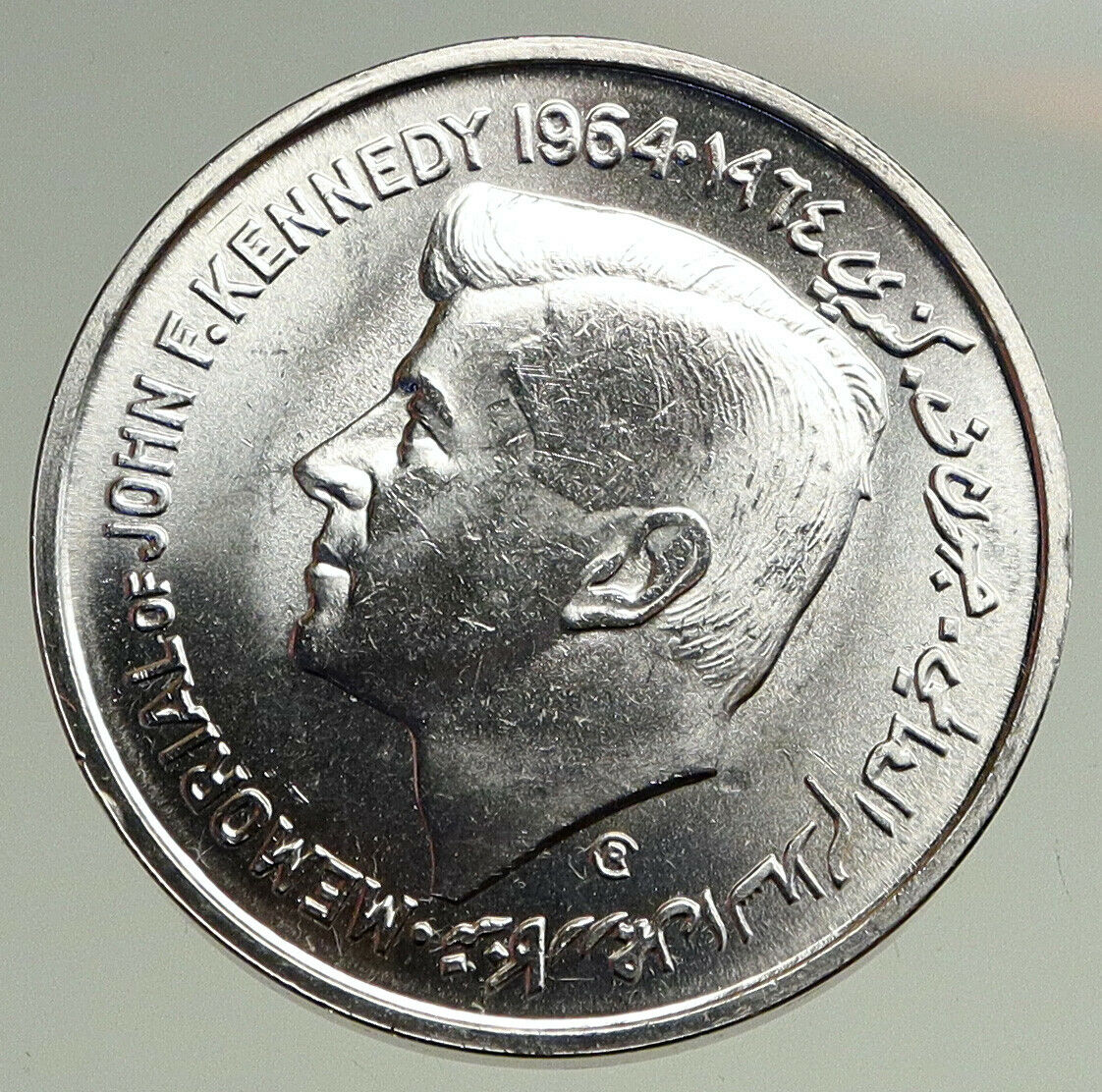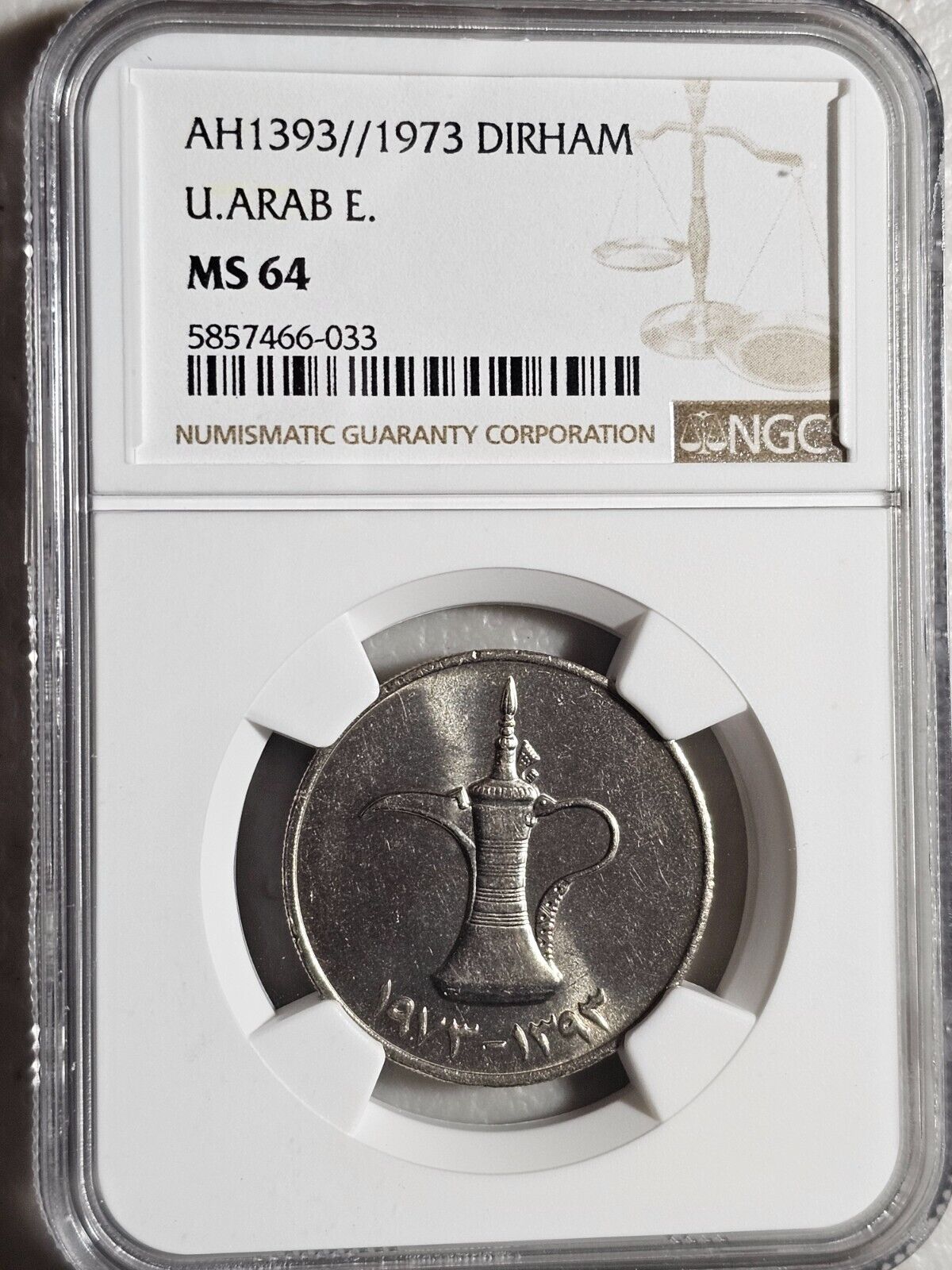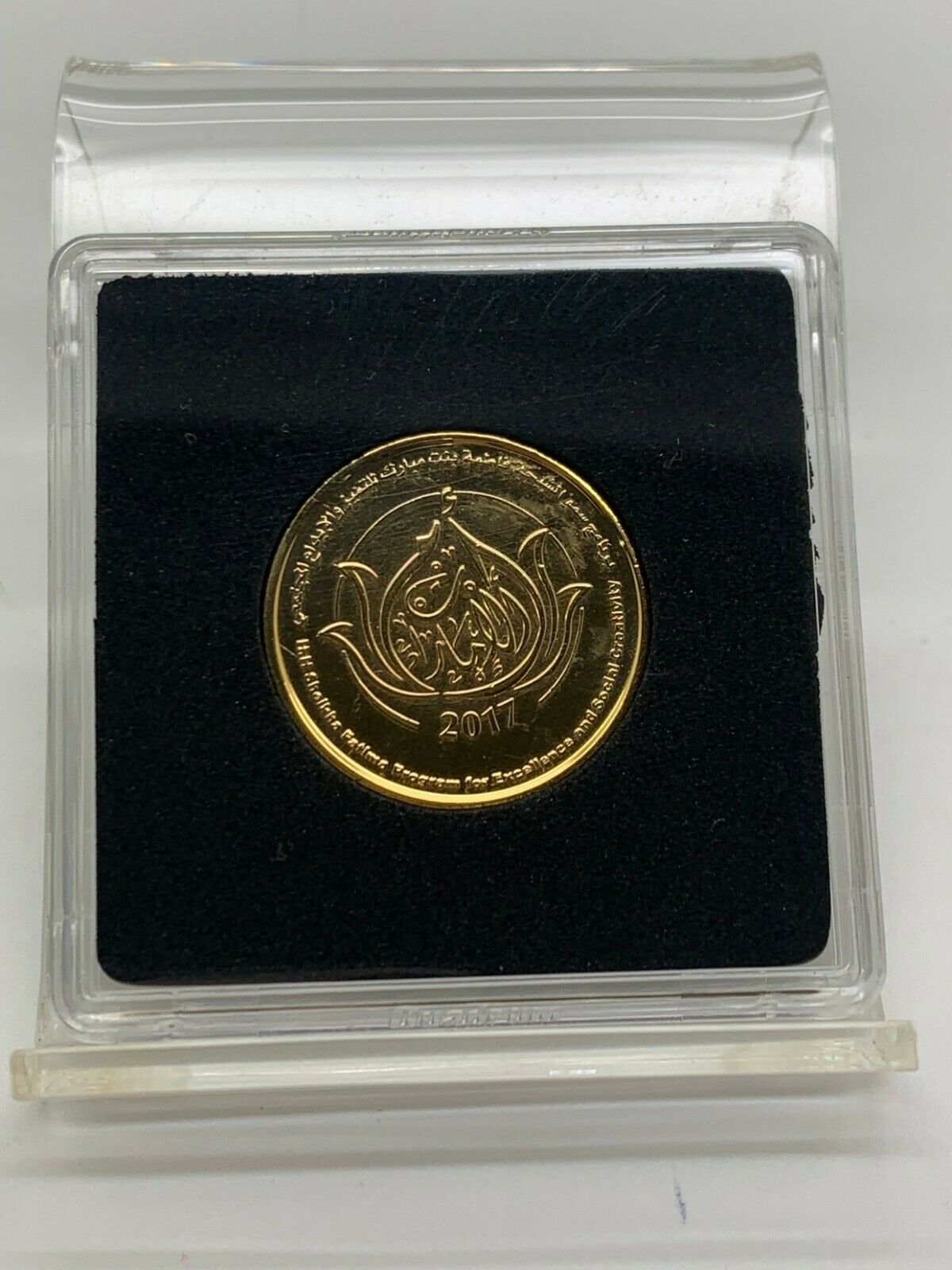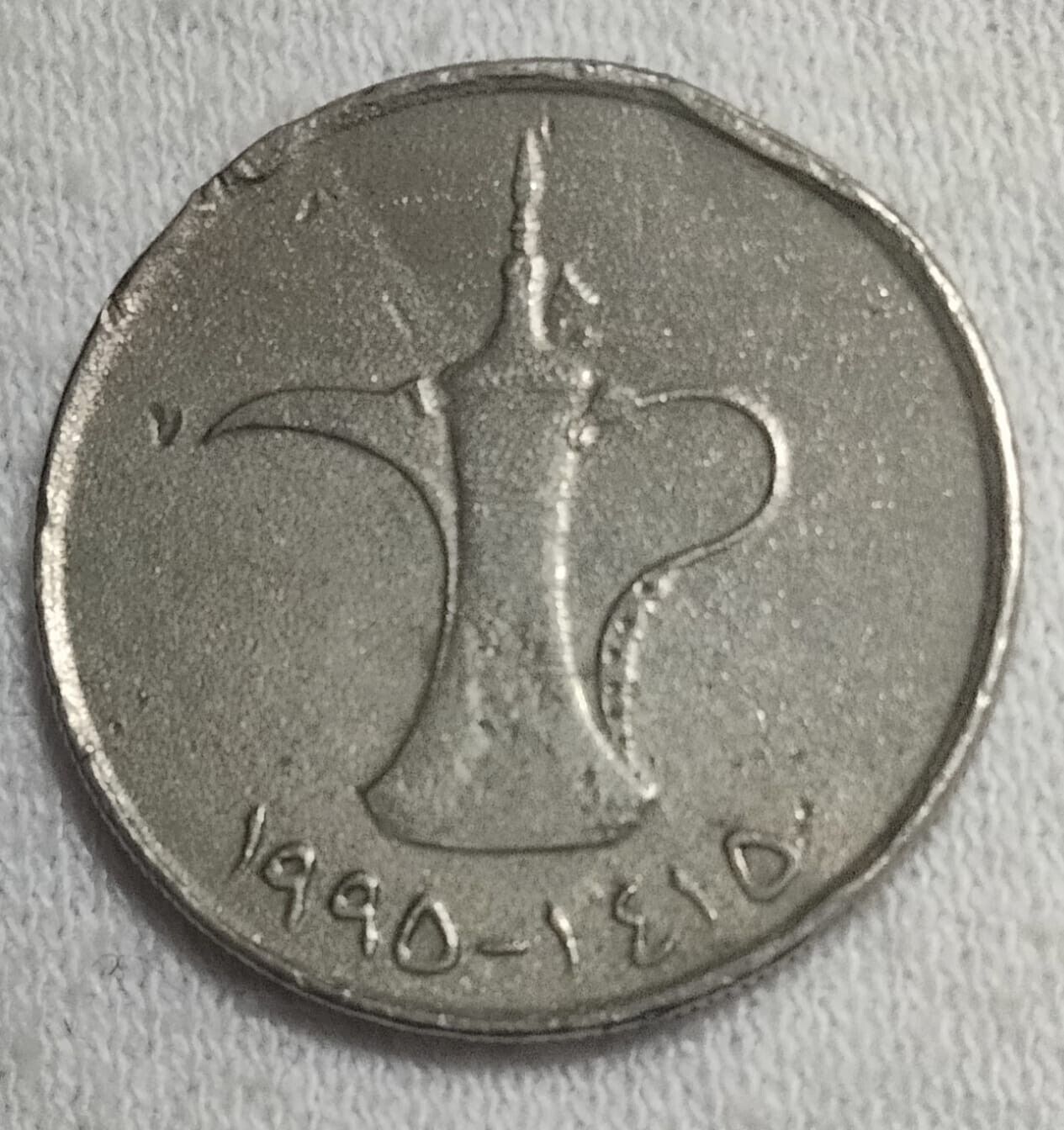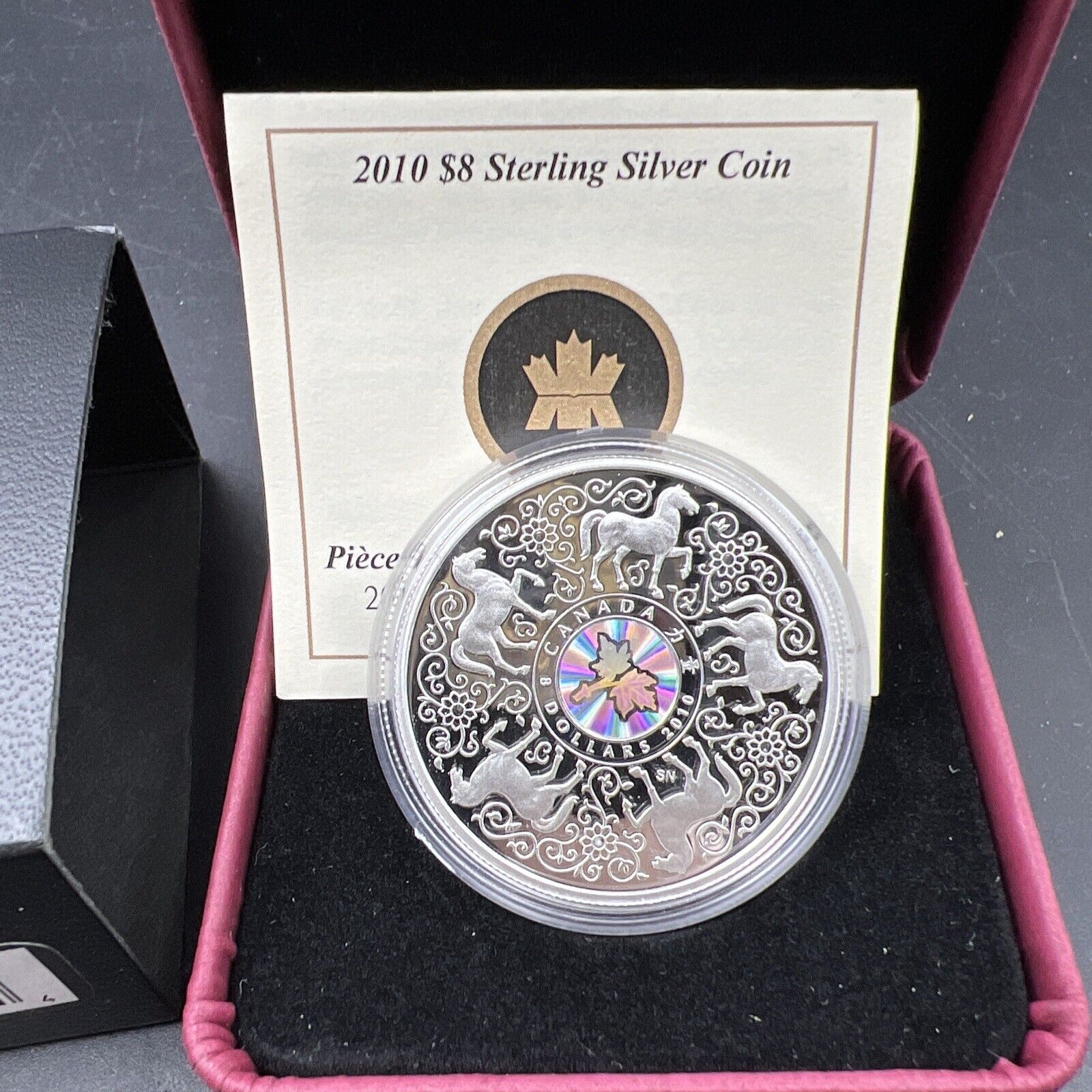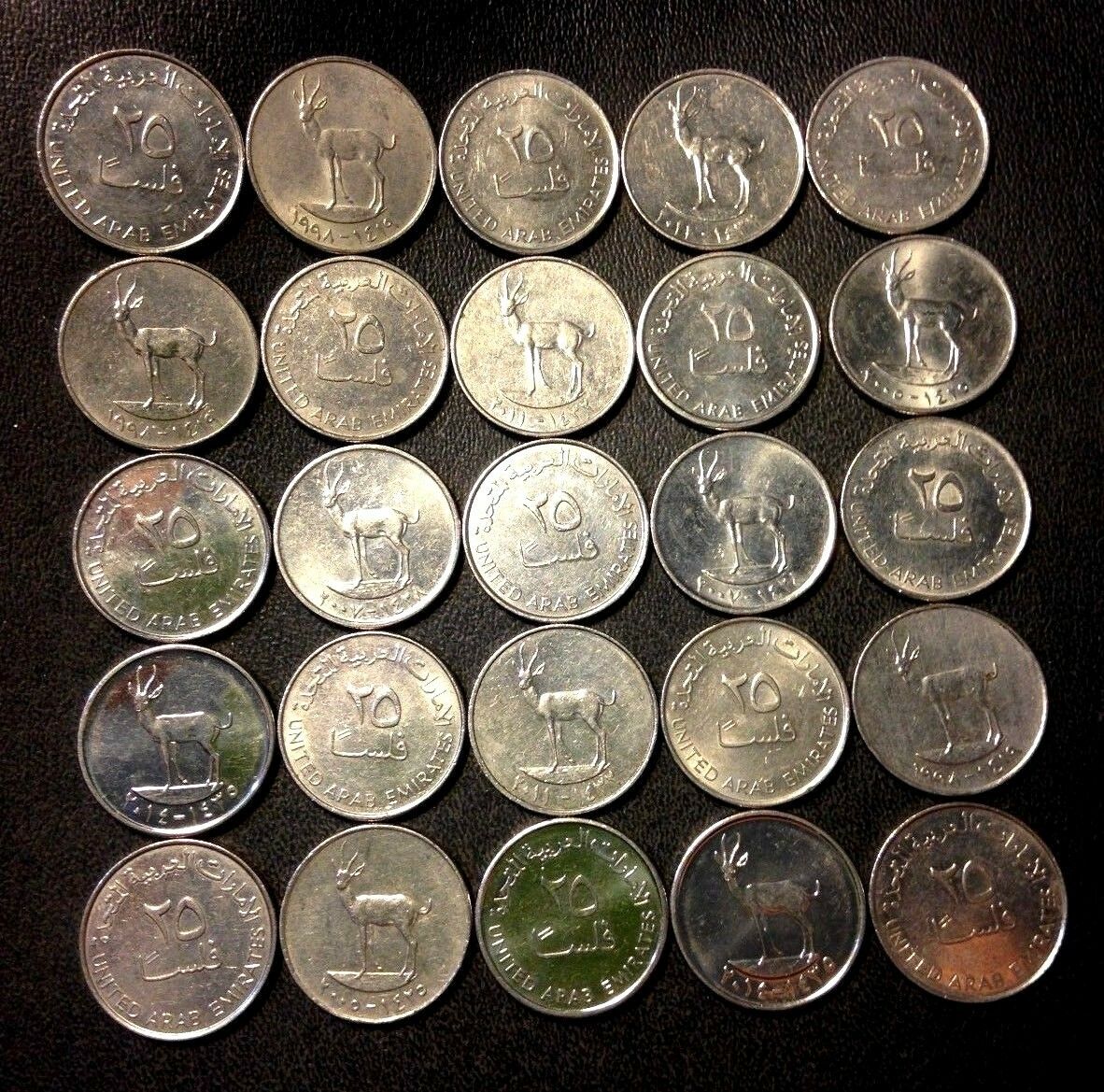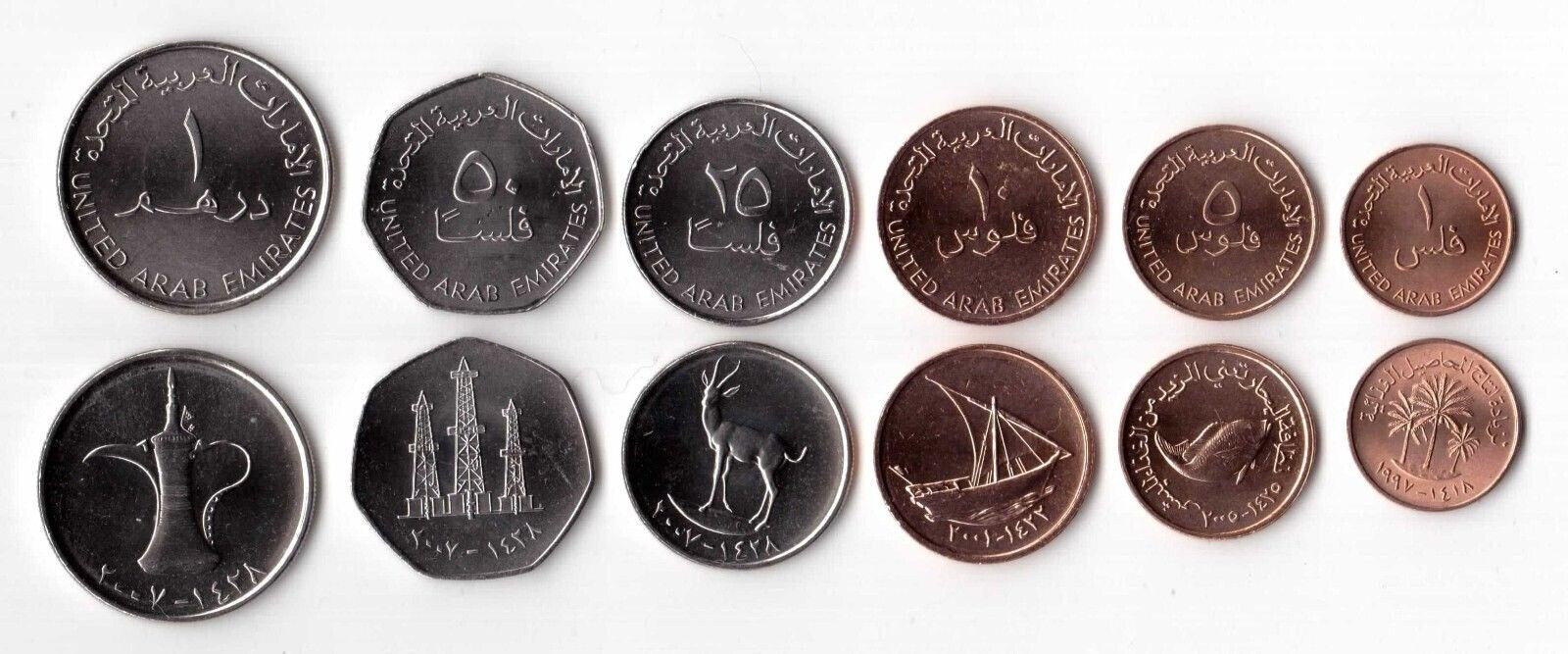-40%
1964 SHARJA United Arab Emirates JOHN F. KENNEDY Old Silver 5 Rupees Coin i94746
$ 522
- Description
- Size Guide
Description
Item:i94746
Authentic Coin of:
Sharjah (United Arab Emirates)
First Memorial of US President John F. Kennedy - Fantasy Issue
1964
Silver 5 Rupees
36mm
(
25.00 grams
) 0.720 Silver, Paris Mint
Reference: X# 1
žŁ┘ā┘ł┘ģ┘Äž® ž¦┘äž┤ž¦ž▒┘éž® 720 ┘¦┘ó┘Ā 5 RUPEES OF SHARJAH ┘ź ž▒┘łž©┘Ŗ┘Äž¦ž¬ ž¦┘äž┤ž¦ž▒┘éž® , Sharjah National Coat-of-Arms.
┬Ę MEMORIAL OF JOHN F. KENNEDY 1964 ┬Ę ž¬ž░┘āž¦ž▒ ž▒ž¼┘ä ž¦┘äž│┘䞦┘ģ ž¦┘äž╣ž¦┘ä┘ģ┘Ŗ - ž¼┘ł┘å ┘ü. ┘ā┘åž»┘É┘Ŗ ┘Ī┘®┘”┘ż CR, Portrait of US President John F. Kennedy facing left.
Coin Notes:
This coinage was ordered by the ruler of Sharjah, Sheikh Saqr III bin Sultan Al Qasimi who, according to the British, had no authority to issue it - Apart from the word ŌĆ£proofŌĆØ appearing on the proof issue coins, the surfaces of the two issues (normal and proof) are of exactly the same quality - The whole issue was sold to a US commercial group, and a retail price of .95 was set for the circulation pieces. The ŌĆ£proofsŌĆØ were sold for each. The 5 Rupees were equal to .05 - There was no indication that any of these coins entered circulation in Sharjah - Gulf Rupee was the currency of the trucial states between 1959-1966 in the form of paper money issued by the Government of India - In June 1965, Sheikh Saqr III bin Sultan Al Qasimi was banished by the British into exile, and he stayed in Cairo, Egypt - It was issued before the ban on heikh Saqr III bin Sultan Al Qasimi, who ordered the minting of the coin. - On 6 June 1966, India devalued the rupee. To avoid following this devaluation, several of the states using the rupee adopted their own currencies. Qatar and most of the Trucial States adopted the Qatar and Dubai riyal, while Abu Dhabi adopted the Bahraini dinar. Only Oman continued to use the Gulf rupee, until 1970, with the government backing the currency at its old peg to the pound. Oman replaced the Gulf rupee with its own rial in 1970.
You are bidding on the exact item pictured, provided with a Certificate of Authenticity and Lifetime Guarantee of Authenticity.
Sheikh Rashid bin Humaid Al Nuaimi
was the Ruler of Ajman, one of the Trucial States which today form the United Arab Emirates (UAE), from 1816ŌĆō1838, leading a force of 50 men to take control of the town from members of the Al Bu Shamis tribe who had settled there and also at Al Heera. At the time, Ajman was a dependency of Sharjah. Five years after his establishment at Ajman, the fort was taken by the Darawisha Bedouin who were removed by the action of the Ruler of Sharjah, Sheikh Saqr bin Sultan Al Qasimi.
Relatively little is known about the reign of Rashid bin Humaid. He was signatory to the 1820 General Maritime Treaty with the British, becoming one of the first Rulers of the Trucial States, later to become the United Arab Emirates (UAE).
The Nuaimi name derives from the Na'im tribal confederation which dominated the area around Buraimi and the Northern movement of the tribe, the Al Bu Kharabain appears to have settled in Ajman, as well as the area of Al Heera, Hamriyah and even Sharjah. He acceded to the General Maritime Treaty of 1820 following the British punitive expedition from Bombay against the Al Qasimi at Ras Al Khaimah. In 1819, that force bombarded the coastal settlements of the Gulf Peninsula, including Ajman, leading to the capitulation of the coastal Sheikhs and the signing of the treaty in Ras Al Khaimah and Sharjah. Rashid bin Humaid signed the treaty on 15 March 1820, together with Sheikh Abdullah bin Rashid Al Mualla, Ruler of Umm Al Quwain. Both Rulers signed the treaty at Falayah, an inland dependency of Ras Al Khaimah.
Rashid led his people in a war against Sohar, in coalition with Sultan Said of Muscat and in 1831 boats from Ajman took some dozen vessels and their cargoes sailing from Sohar. Two British gunboats were despatched to Ajman and reparations were demanded and paid.
He died in 1838 and was succeeded by his son, Humaid bin Rashid Al Nuaimi.
Ajman
(Arabic: ž╣ž¼┘ģž¦┘åŌĆÄ
'AŪ¦m─ün
) is the capital of the emirate of Ajman in the United Arab Emirates. It is the fifth-largest city in UAE after Dubai, Abu Dhabi, Sharjah and Al Ain. Located along the Persian Gulf. It is the smallest emirate of the United Arab Emirates and is engulfed by the larger emirate of Sharjah.
Al Bu Kharaiban Nuaimi rule in Ajman started in 1816, when Sheikh Rashid bin Humaid Al Nuaimi and fifty of his followers took the coastal settlement of Ajman from members of the Al Bu Shamis Nuaimi tribe in a short conflict. It wasn't until 1816 or 1817, however, that the Ajman fort finally fell to Rashid's followers and his rule was endorsed by the powerful Sheikh of neighbouring Sharjah and Ras Al Khaimah, Sheikh Sultan bin Saqr Al Qasimi.
On 8 January 1820, following the sack of Ras Al Khaimah by a British force led by Sir W.G. Keir, Sultan bin Saqr signed the General Maritime Treaty with the United Kingdom on 4 February 1820, followed on 15 March by Rashid bin Humaid at Falaya Fort.
An 1822 British maritime survey noted that Ajman had one of the best backwaters on the coast and was a small town with a single fortified building, the ruler's house. In common with many other coastal towns on what became the Trucial Coast, the population was mobile depending on the season ŌĆō there were as many as 1,400 to 1,700 men of the 'Mahamee' tribe living there during the pearl hunting season (AprilŌĆōSeptember), many of whom would migrate to Al Buraimi in the date season. The survey notes that Ajman's ruler Rashid bin Ahmed considered his dominion independent of Emirate of Sharjah, but that Sharjah did not maintain that view even though it had no power over Ajman. The survey noted that the inhabitants of Ajman were 'mostly strict Wahhabis' and recorded the presence of the ruined village of
Fasht
down the shore from Ajman town, which is today the Fisht suburb of Sharjah city.
In 1831, the Sheikh of Ajman accepted a subsidy from the Imam of Muscat to join with Sultan bin Saqr of Sharjah against Sohar, but following Sultan's defeat declared for Sohar.
]
In his absence, a part of Bani Yas from Abu Dhabi sacked Ajman town and its date groves. In retaliation, the forces of Ajman committed 'daring depredations' upon the cities of Sohar and Muscat. When called upon to provide redress for the actions of his 'subject', Sultan bin Saqr disavowed any authority over Ajman and in 1832 a British naval force was sent to Ajman to obtain redress for the raids on the East Coast cities. Ending a conflict between Sharjah, Ajman and Dubai on the one hand and Abu Dhabi on the other, Ajman (together with the other parties) signed the 1835 Maritime Treaty in its own right.
In 1840, Humaid bin Obeid bin Subt of Al Heera invaded Ajman supported by a body of the Bani Naeem. Although initially reluctant to assist Humeid bin Rashid, Sultan bin Suggur of Sharjah sent his son Suggur who, together with Maktoum of Dubai, ejected the invaders and sacked Al Heera in reprisal.
In 1843 a further Maritime Treaty was signed between the Trucial Sheikhs and the British and then, on 4 May 1853, 'A Perpetual Treaty of Peace' was entered into by the coastal Sheikhs, including Ajman. A copy of this treaty is on display in Ajman Museum. A further treaty of 1892 bound the Trucial States to Britain.
By the 20th century, J. G. Lorimer's survey of the coast of the Trucial States showed Ajman to be a small town of some 750 inhabitants (in comparison, the population of Dubai at the time numbered over 10,000). On 2 December 1971, Ajman, under Sheikh Rashid bin Humayd Al Nuaimi, joined the United Arab Emirates.
The
United Arab Emirates
(
UAE
; Arabic: ž¦┘äžź┘ģž¦ž▒ž¦ž¬ ž¦┘äž╣ž▒ž©┘Ŗž® ž¦┘ä┘ģž¬žŁž»ž®
al-╩ŠIm─ür─üt al-╩┐Arab─½yah al-MuttaßĖźidah
), sometimes simply called the
Emirates
(Arabic: ž¦┘äžź┘ģž¦ž▒ž¦ž¬
al-╩ŠIm─ür─üt
), is a country in Western Asia located at the eastern end of the Arabian Peninsula. It borders Oman and Saudi Arabia, and has maritime borders in the Persian Gulf with Qatar and Iran. It is a federal elective constitutional monarchy formed from a federation of seven emirates, consisting of Abu Dhabi (which serves as the capital), Ajman, Dubai, Fujairah, Ras Al Khaimah, Sharjah and Umm Al Quwain. Their boundaries have numerous enclaves within each other. Each emirate is governed by a ruler, who together form the Federal Supreme Council, and one of whom serves as President of the United Arab Emirates. In 2013, the UAE's population was 9.2 million, of which 1.4 million were Emirati citizens and 7.8 million were expatriates. The estimated population of the UAE in 2020 was 9.89 million.
Islam is the official religion and Arabic is the official language. The UAE's oil reserves are the sixth-largest in the world while its natural gas reserves are the world's seventh-largest. Zayed bin Sultan Al Nahyan, ruler of Abu Dhabi and the first President of the UAE, oversaw the development of the Emirates and steered oil revenues into healthcare, education, and infrastructure. The UAE's economy is the most diversified of all the members of the Gulf Cooperation Council, while its most populous city of Dubai is a global city and international aviation and maritime trade hub. The country has become less reliant on oil and gas, and is economically focusing on tourism and business. The UAE government does not levy income tax, although there is a system of corporate tax in place and value-added tax at 5% was established in 2018.
The UAE's rising international profile has led to it being recognised as a regional and a middle power. The UAE is a member of the United Nations, the Arab League, the Organisation of Islamic Cooperation, OPEC, the Non-Aligned Movement, and the Gulf Cooperation Council.
Frequently Asked Questions
Mr. Ilya Zlobin
, world-renowned expert numismatist, enthusiast, author and dealer in authentic ancient Greek, ancient Roman, ancient Byzantine, world coins & more.
Who am I dealing with?
You are dealing with Ilya Zlobin, ancient coin expert, enthusiast, author and dealer with an online store having a selection of over 15,000 items with great positive feedback from verified buyers and over 10 years experience dealing with over 57,000 ancient and world coins and artifacts. Ilya Zlobin is an independent individual who has a passion for coin collecting, research and understanding the importance of the historical context and significance all coins and objects represent. Most others are only concerned with selling you, Ilya Zlobin is most interested in educating you on the subject, and providing the largest selection, most professional presentation and service for the best long-term value for collectors worldwide creating returning patrons sharing in the passion of ancient and world coin collecting for a lifetime.
How long until my order is shipped?
Orders are shipped by the next business day (after receipt of payment) most of the time.
How will I know when the order was shipped?
After your order has shipped, you will be left positive feedback, and that date could be used as a basis of estimating an arrival date. Any tracking number would be found under your 'Purchase history' tab.
USPS First Class mail takes about 3-5 business days to arrive in the U.S. International shipping times cannot be estimated as they vary from country to country.
Standard international mail to many countries
does not
include a tracking number, and can also be slow sometimes.
For a tracking number and signature confirmation, you may want to do Express Mail International Shipping, which costs more, however, is the fastest and most secure. Additionally you may be able to receive your order in as little as 3-5 business days using this method. For Express Mail International, it may be possible to place up to 10-15 items in one package (for the one shipping cost) as it is flat rate envelope, which may be the most cost-effective, secure and fastest way to receive items internationally. Send me a message about this and I can update your invoice should you want this method.
Getting your order to you, quickly and securely is a top priority and is taken seriously here.
Great care is taken in packaging and mailing every item securely and quickly.
Please be aware, I cannot take responsibility for any postal service delivery delays, especially for international packages as it may happen in rare instances.
What is a certificate of authenticity and what guarantees do you give that the item is authentic?
Each of the items sold here, is provided with a Certificate of Authenticity, and a Lifetime Guarantee of Authenticity, issued by a world-renowned numismatic and antique expert that has identified over 57,000 ancient coins and has provided them with the same guarantee. You will be very happy with what you get with the COA; a professional presentation of the coin, with all of the relevant information and a picture of the coin you saw in the listing. Additionally, the coin is inside it's own protective coin flip (holder), with a 2x2 inch description of the coin matching the individual number on the COA.
On the free-market such a presentation alone, can be considered a - value all in itself, and it comes standard with your purchases from me,
FREE.
With every purchase, you are leveraging my many years of experience to get a more complete context and understanding of the piece of history you are getting. Whether your goal is to collect or give the item as a gift, coins presented like this could be more prized and valued higher than items that were not given such care and attention to.
Buy a coin today and own a piece of history, guaranteed.
Is there a money back guarantee?
I offer a 30 day unconditional money back guarantee. I stand behind my coins and would be willing to exchange your order for either store credit towards other coins, or refund, minus shipping expenses, within 30 days from the receipt of your order. My goal is to have the returning customers for a lifetime, and I am so sure in my coins, their authenticity, numismatic value and beauty, I can offer such a guarantee.
When should I leave feedback?
Once you receive your order, please leave a positive feedback. Please don't leave any negative feedbacks, as it happens sometimes that people rush to leave feedback before letting sufficient time for their order to arrive. Also, if you sent an email, make sure to check for my reply in your messages before claiming that you didn't receive a response. The matter of fact is that any issues can be resolved, as reputation is most important to me. My goal is to provide superior products and quality of service.
How and where do I learn more about collecting ancient coins?
Visit the "
Guide on How to Use My Store
" for on an overview about using my store, with additional information and links to all other parts of my store which may include educational information on topics you are looking for.
